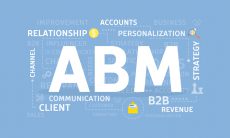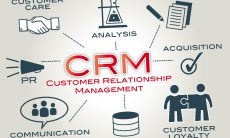Data-Driven Sales 1.0
The introduction of CRM (for sales) and now MRM (for marketing) has brought sales people out of the “information on paper and in my head” era kicking and screaming and into the age of technology and data. We’ve all heard far too many stories of the difficulties this transition created. The screaming is over, for the most part, as any competent sales person now records information on a CRM system.
What these changes didn’t do was increase sales productivity. In fact, some would argue CRM implementation actually lowered sales productivity, but those who say that probably didn’t enjoy the time and effort to use the software or were getting negative feedback from the sales staff.
In spite of CRM sales managers are still faced with developing a sales organization that produces revenue cost effectively in these days of decreasing budgets and head counts. Having managed several national sales groups in my past life, the tools at our disposal were and still are – hire the best; fire fast; train, motivate and coach; align compensation with results; organize territories properly; keep non-selling time to a minimum; then stand back and let sales do their job.
This approach, while valid, hasn’t improved sales productivity and it continues to decline as measured by the percentage of revenue spent to sell “X” dollars. This cost-of-selling percentage ranges from a low of 3-5% to as high as 15-20% of revenue. Five common reasons for this on-going decline in sales productivity are:
- The cost per call is increasing faster than pricing – the average cost per call is between $500-700 for fly/drive territories, and between $150-300 for local driving territories.
- The number of calls per day has dropped to an average of 1.9 for fly/drive territories from the old standard of 4/day, and to 3.4 per day from 6/day for driving territories.
- This decrease in call rates/day is primarily caused by prospects and customers not wanting or willing to see sales people – “can you send me an email on that”
- The growth of buying teams and multiple decision makers requiring even more calls
- The corollary lengthening of the buying process that also extends the sales cycle
A new sales coverage model is badly needed to attack the issue of declining sales productivity.
Data-Driven Sales 2.0
We’re now in the emerging era of data. For B2B companies, it’s not the vaunted Big Data, but rather the availability of just lots more data on prospects and customers. Regardless if it’s from data compilers, list companies, social media or directly from the prospects and customers the deluge of data is upon us. The two burning questions are:
- How can we combine all the data into a functional and operating marketing and sales database? (See my prior blog B2B Data – Get Smart, Not Big)
- Once we have the database, how do we best use the data?
One answer to the second question is to use the database to develop and drive a new sales coverage model that directly addresses the issue of sales productivity.
Briefly, instead of having the sales person solely responsible for covering their assigned territories, marketing and even sales operations also takes some responsibility for contacting and communication to prospects and customers. Here is a 5 step process to developing a New Sales Coverage Model:
- Identify the buying process for all customer segments that outlines the functional contacts likely to be involved in a buying decision. Smaller customers will have one or two contacts and larger ones could have 15-20 or more. Add contact names to each of these functions for important potential and current customers – not an easy task, but there are new ways to find this data. What becomes instantly obvious is that the sales person would never be able to communicate to all these contacts effectively.
- In a joint marketing and sales meeting, outline the messages and offers that each functional contact should be receiving for both branding and sales rationale – this is where content marketing comes into play. As an example, the economic buyer will want different information than the end-user of the product or service.
- Determine the frequency of outbound communications, each functional contact should receive over a year using the four primary media of communication – email, mail, phone, and face-to-face. The inclusion of phone is usually from an inside sales group teamed with the outside sales person. Clearly not every contact should receive all messages and offers. Social media is not included as a standalone media, and is usually combined with one of the four above. This, of course, depends on your market.
- Communicate to all contacts in the territory that they will begin receiving multiple forms of communication. This not only alerts them to your change in communication, but also allows them to provide feedback on any of the four media they would not want – sort of an opt-out option.
- Execute and measure results in terms of customer satisfaction, sales results and sales productivity. Adjust as appropriate or in golf terms – play nine holes and adjust.
In my experience this new sales coverage model frees up about 20-30% of a sales person’s time to call on more accounts. In practical terms, there are approximately 200 selling days per year and at 1.9 calls per day that equals 380 face-to-face sales calls. If this new model frees up only 20% of sales time, it will translate into 76 more sales calls. Clearly more sales should result by better use of the sales person’s time and skill and that is called sales productivity. Try it – you’ll like it and so will the sales staff!





